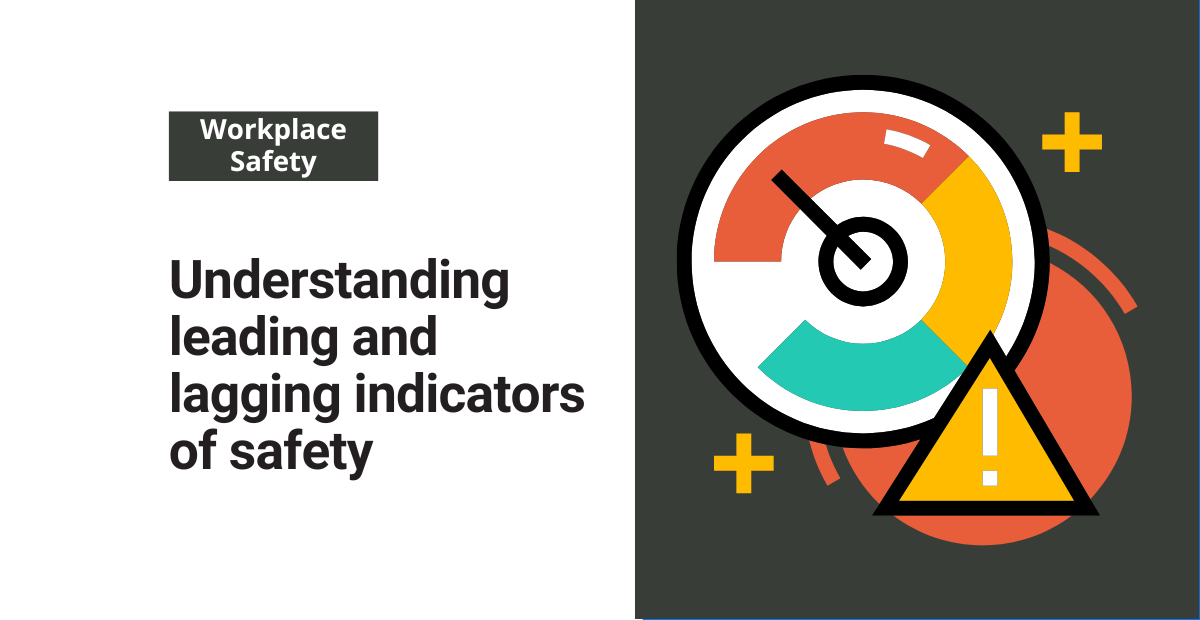How many businesses track safety metrics as a means of improving their procedures and processes? The answer is “not enough.” Many businesses simply track safety indicators for OSHA reporting purposes. And they’re missing out on key insights to help them protect employees and avoid expenses related to workplace incidents.
To get the full picture, however, you need to look at a variety of variables, known as “leading and lagging indicators.” Your safety data shows how your site is preventing incidents and dealing with them after the fact. And better understanding leading and lagging indicators of safety is essential for setting goals and watching your site’s performance over time.
What are leading indicators?
Leading indicators are measurable variables that you can use to figure out how your operation will perform in the future. The goal of leading indicators is to let you know before something bad has happened.
By tracking leading indicators, you can find out in real-time how specific work tasks are progressing. This gives you insight that you can use to course correct and strategize for future goals. Safety leading indicators tell you where your site is heading in terms of overall safety performance. They help you track progress on things like:
- Training completion
- Safety committee goals
- Exam pass rates
- OSHA compliance
- Employee safety initiatives
- Near misses
- Safety culture and overall engagement
By using leading indicators as a metric, you’re able to stay ahead and on top of tasks, events, and overall operations within your company. You’re being proactive rather than just reactive. If you want to address operational hazards and compliance issues before they create a bigger problem, make sure you’re tracking on these indicators.
Why do leading indicators matter?
Tracking leading indicators enables organizations to prevent safety incidents and health hazards.
It also allows organizations to strengthen and improve workplace safety programs steadily and consistently. Knowing which areas of safety programs need improvement makes your changes more effective at preventing incidents. If you don’t pay attention to these indicators, you may not have a full picture of your site’s overall safety performance.
Say, for example, that you’ve gone 200 days without an incident. Your TRIR (total recordable incident rate) looks great, right? But behind the scenes, you’ve had several near misses showing that a certain step in the process is no longer safe. If you’re not watching for this indicator, you might not be able to prevent an inevitable incident that causes a serious injury or death.
What are lagging indicators?
Lagging indicators are measurable variables that tell you how your operation has performed in the past. They are most commonly the metrics that show how often certain events happen, how efficient your process has been, or how much you have spent on certain safety measures.
Measuring output from past events can tell you whether your facility is running safely. For example, one lagging indicator would be your incident rate. You can only know how many incidents you’ve had until after they’ve occurred. This means that you can only use lagging indicators reactively to prevent incidents from happening again.
Lagging indicators tell you how you’ve performed in the past so you can set new goals for the future. Unlike leading indicators, they’re more quantitative than qualitative. Since they provide insight into the past, they should be specific and detailed. With the information from all your lagging indicators, you can decide how you want to approach incidents moving forward.
Why do lagging indicators matter?
Lagging indicators in safety are important because they track and measure outcomes of workplace safety programs, initiative, and incidents. They tell you the impact a specific event has had on your business. Organizations can also review lagging indicators to decide which parts of their safety programs work and which ones don’t.
Using both indicators together
It’s important to use both leading and lagging indicators of safety to set goals and assess your safety initiatives. Because these indicators provide completely different insights, they each make up for what the other is lacking. Lagging indicators for safety are looking at the past, while leading indicators are looking at the future.
By using them both, you get a complete picture of where you’re at and where you’re going. Each metric helps you see what needs to be done to improve specific safety elements.
Any data that is collected from both lagging and leading indicators must be followed with action. So, after you analyze the data, look at making specific changes to your current safety programs and training.
Maybe you need to replace a dangerous machine or clarify a crucial step in the training process. You may even need to adjust employee hours and shifts. It’s important to remember that tracking leading and lagging indicators alone won’t solve your problems. You need to be willing and flexible to implement effective changes.
The more often you track these variables, the easier it will be to avoid incidents. The long-term impact is that you have fewer overall incidents, safer employees, and more money to invest in upgrading your facilities.
Regardless of the input data, when both indicators of safety are used together, you’re able to optimize safety performance in the workplace. Just make sure that you effectively communicate any recent changes to your employees. If you try to implement a change without the feedback and buy-in of your frontline workers, you’ll quickly find out that you may have missed important considerations in the implementation process.




